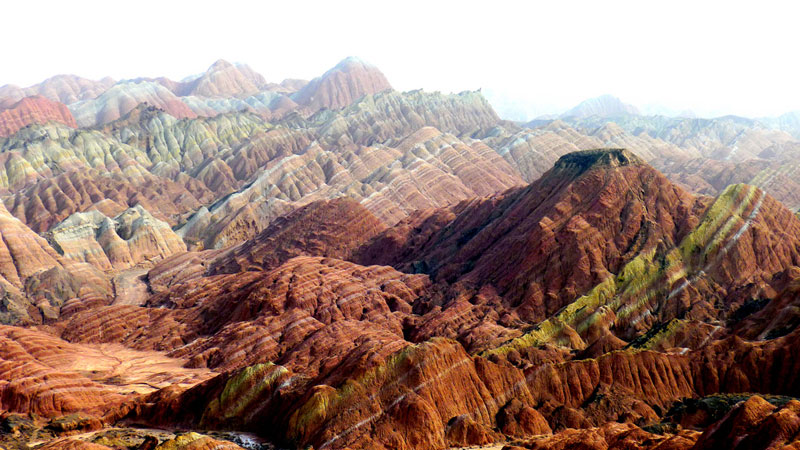China Danxia is a UNSECO World Heritage Site and the name given in China to landscapes developed on continental red terrigenous sedimentary beds influenced by endogenous forces (including uplift) and exogenous forces (including weathering and erosion). The inscribed site comprises six areas found in the sub-tropical zone of south-west China.
They are characterized by spectacular red cliffs and a range of erosional landforms, including dramatic natural pillars, towers, ravines, valleys and waterfalls. These rugged landscapes have helped to conserve sub-tropical broad-leaved evergreen forests, and host many species of flora and fauna, about 400 of which are considered rare or threatened.
Below you will find an incredible gallery of these painted landscapes in Southern China along with additional information from UNESCO about China Danxia. Enjoy!
[via UNESCO, The Telegraph]
1.
2.
China Danxia is a serial property comprising six component parts (Chishui, Taining, Langshan, Danxiashan, Longhushan, and Jianglangshan) found in the sub-tropical zone of south-eastern China within approximately 1700 km crescent-shaped arc from Guizhou Province in the west to Zhejiang Province in the east.
[Source: UNESCO]
3.
4.
Being shaped by both endogenous forces (including uplift) and exogenous forces (including weathering and erosion), China Danxia provides a range of different aspects of the phenomenon of physical landscape developed from continental (terrestrial) reddish conglomerate and sandstone in a warm, humid monsoon climate, illustrating both the range of landforms in relation to the forces and processes that formed them. The component parts represent the best examples of “least eroded” to “most eroded” Danxia landforms, displaying a clear landform sequence from “young” through “mature” to “old age”, and with each component site displaying characteristic geomorphologic features of a given stage.
[Source: UNESCO]
5.
6.
The property is state-owned and its protected status varies between the six component parts: most have national park status, though land status also includes national nature reserve, national forest, and geopark. Each one of the six component parts is protected under relative laws and regulations at both national, provincial and local levels, which ensure the adequate long-term legislative, regulatory, institutional and traditional protection of the outstanding universal values.
[Source: UNESCO]
7.
8.
The unusual colours of the rocks are the result of red sandstone and mineral deposits being laid down over 24 million years. The resulting ‘layer cake’ was then buckled by the same tectonic plates responsible for parts of the Himalayan mountains. Wind and rain finished the job by carving weird and wonderful shapes including natural pillars, towers, ravines, valleys and waterfalls – that differ in colour, texture, shape, size and pattern.
[Source: Amos Chapple for The Telegraph]
9.
10.
China Danxia Landform Locations
11.
12.
If you enjoyed this post, the Sifter
highly recommends:
